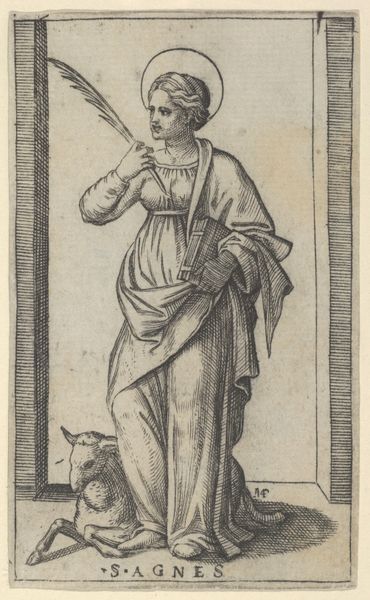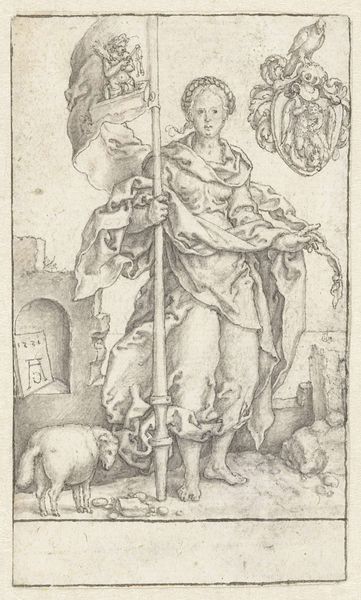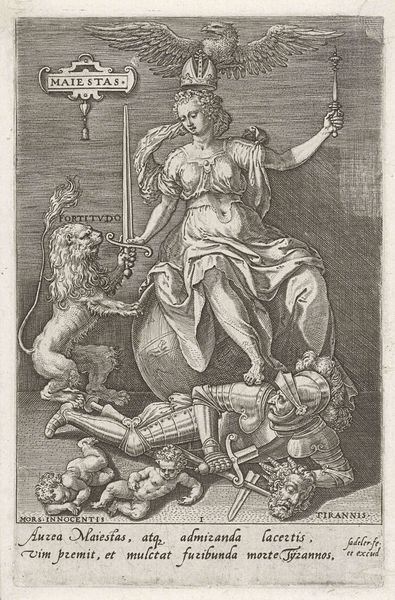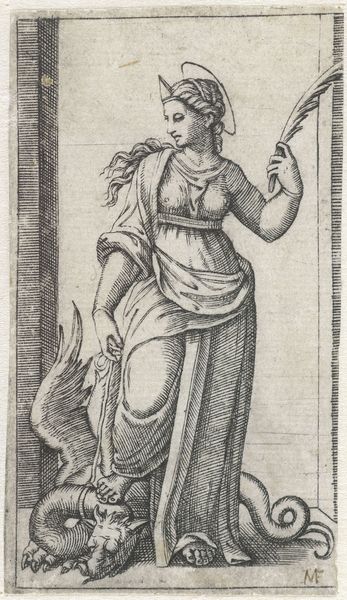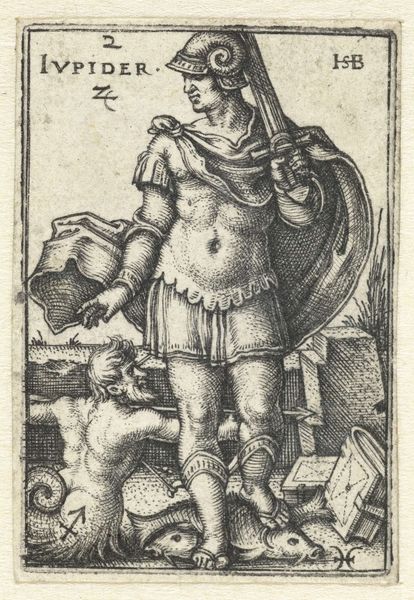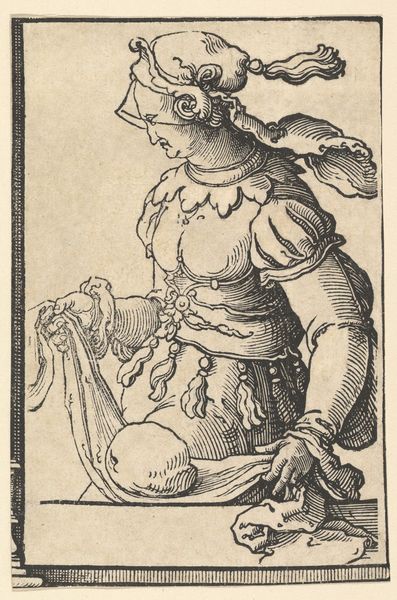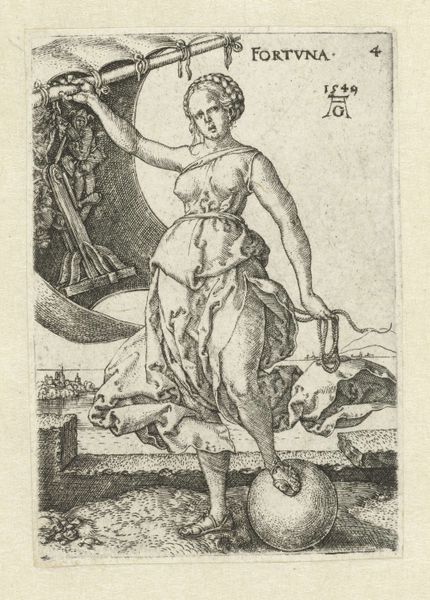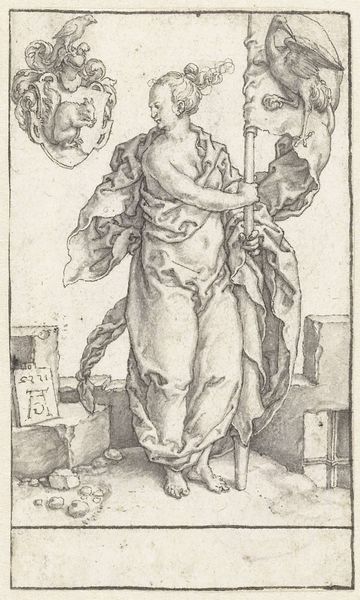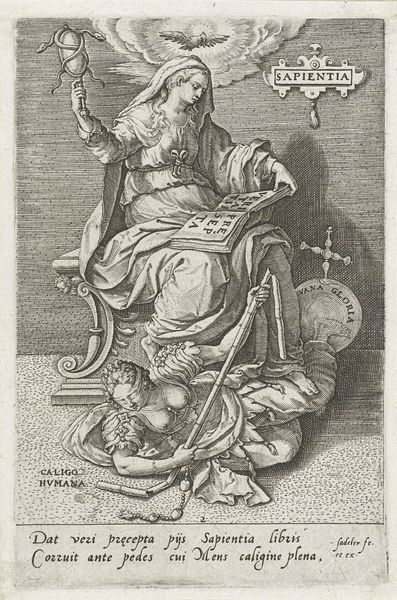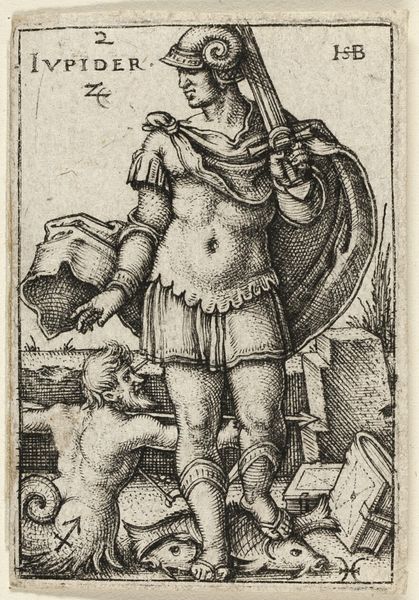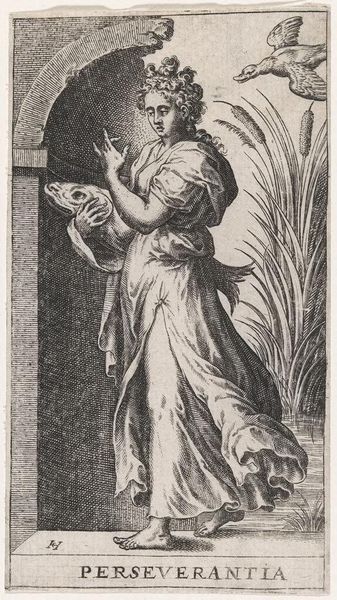
print, engraving
#
allegory
# print
#
old engraving style
#
figuration
#
history-painting
#
northern-renaissance
#
engraving
Dimensions: height 81 mm, width 54 mm
Copyright: Rijks Museum: Open Domain
This engraving, “Wellust (Luxuria),” was made by Georg Pencz in the 16th century. Pencz was a German artist who was part of a group known as the “Little Masters” because of their production of small, intricate prints. Here, Pencz depicts Luxuria, or lust, as an allegorical figure. She’s winged, carries arrows, and holds a heart in her hand – all symbols associated with love and desire. At her feet, there's a dog, a traditional symbol of loyalty, but in this context, it might represent the base, animalistic nature of lust. This print reflects the religious and moral concerns of the time, particularly the condemnation of excessive earthly pleasures. Pencz was working during the Reformation, a period of intense religious and social upheaval. His art engages with these debates by visualizing complex moral concepts. Art historians use a variety of sources to understand prints like this, including contemporary religious texts, social histories, and other artworks of the period. By placing it in its historical context, we can better understand its meaning and significance.
Comments
No comments
Be the first to comment and join the conversation on the ultimate creative platform.

